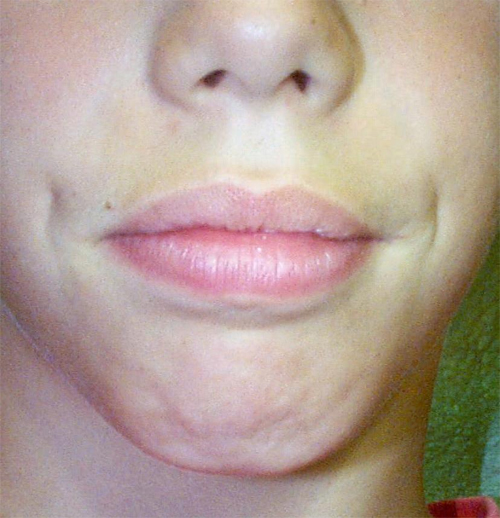Swallowing
The position of the tip of the tongue on the retro-incisive papillae is one of the essential aspects of normal swallowing.
MAURIN describes the normal swallowing function in a newborn as follows: "As the tongue spreads out against the alveolar ridges it comes into contact with the lower lip. The lips contract strongly at the base of the breast or the nipple. The jaw is kept stable by the facial muscles. The arches are always separate in this type of swallowing".
Adult swallowing is defined as follows:
according to CHAUVOIS: "we swallow about 2 000 times every 24 hours, and we do this with the tip of the tongue on the palatine papillae".
When the swallowing function begins the back of the tongue makes an antero-posterior groove, with the edges of the tongue brushing the walls of the cavity formed by the teeth in occlusion. Occlusion involves slight contraction of the masseter and temporal muscles.
Then the tongue is supported on the inner face of the alveolar processes of the upper molars and premolars. The groove disappears, the mylohyoid muscle contracts strongly, the floor of the tongue rises up and the tongue projects backwards into the pharynx.
"Throughout this time, the lips and cheeks must remain completely immobile. Only the movement of the area under the jaw indicates that the mylohyoid muscle is contracting."
The mechanism of adult swallowing takes over between 18 months and 10 years!
Non-standard swallowing is known as:
"Infantile or primary swallowing, and although this isn't the same as that of the newborn there are some similarities" (MAURIN).

There are several types of non-standard swallowing processes. Their most notable common factors are as follows:
- the tip of the tongue is not on the palatine papillae,
- the lateral edges of the tongue are positioned between the alveolar arches,
- the posterior section of the tongue is difficult to raise and the gag reflexes are weak or non-existent,
- the lips contract to ensure a seal although the absence of contraction does not necessarily mean that the swallowing process is correct (FOURNIER).
The reasons:
Those quoted most frequently are: bottle feeding, finger sucking, breathing through the mouth, ageing.
The consequences:
The most common maxillodental consequences are: endoalveolia, proalveolia and anterior or lateral open bites.

